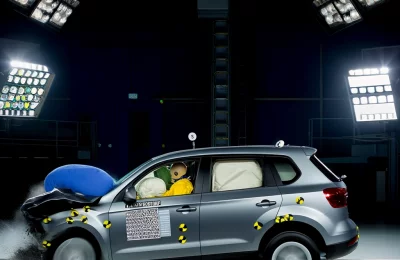
Reading Time: 9 minutes
Experts agree that about 90% of car accidents can be attributed to human error, making it fair to say that bad driving habits kill! But what are bad driving habits?
People don’t talk about good and bad driving habits enough. You might be wondering what percentage of driving accidents are caused by bad habits. Statistics of people dying by bad driving habits are shocking. More than 38,680 people died in motor vehicle accidents in the United States in 2020, which says quite a bit about our driving skills (or lack thereof). Let’s look at what bad driving habits we have acquired, and then change them into good and safe driving habits—or maybe you should just invest in a self-driving car.
Keep reading if you’re wondering “how do I change my bad driving habits drifting and speeding?”
Bad Driving Habits are not Good for Your Car
Avoid becoming a statistic these holidays if you are traveling out of state with interstate shipping. Nationwide Auto Transportation can ship your car so that you can have a short, safe and comfy flight – and arrive to find your car in the same condition as you – fresh and ready to let the good times roll!
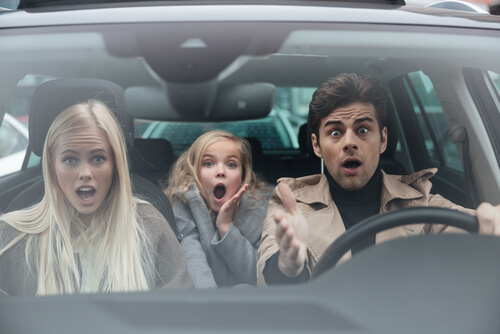
What are bad driving habits?
It seems that as soon as the DMV issues some people with their license, and they remove that big red L from the back window, a lot of good habits learnt leaves alongside it—leaving only a lunatic with bad driving habits.
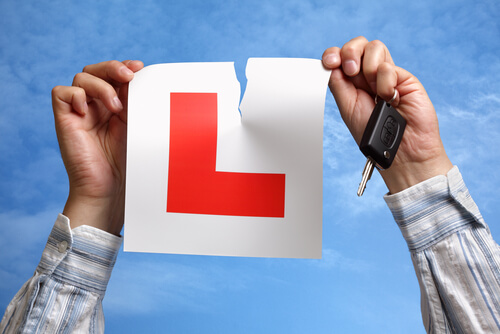
Negligent and bad drivers are the largest cause of road accidents and deaths. Crashtest.org have some interesting articles and stats on this.
Safe Driving
- Driving under the influence of alcohol. National Highway Traffic Safety Administration statistics estimate that roughly 30 people die every day from alcohol-related driving accidents in the United States. Drunk and drugged drivers often think that they will not get caught because alcohol impairs their reasoning. Take a cab or designate a sober driver, and be sure your friends do the same. That’s how you avoid bad habits when driving after a night out on the town.
- Getting distracted while driving. It is very easy for a driver to get distracted while driving and look away from the road. Distractions include everything from a nagging passenger, talking, adjusting the mirror or radio and eating. The number one distraction for drivers today, and I am sure you already knew this, are smartphones. 3,142 people died in distracted driving accidents in 2019. Using a cell phone while driving poses a special concern. It involves high-attention activities like texting, browsing the internet, and even taking selfies. Cell phone use while driving is so widespread and deadly that campaigns are constantly running for people of all ages to commit not to text and drive.
- Do you feel the need for speed? Traffic accidents and fatalities caused by speeding have been a persistent problem for decades. It accounted for 26% of traffic fatalities in 2019. On its own speeding already puts you at risk. But combine speed with aggression, or being distracted or even intoxicated, and you are really just an accident waiting to happen.
More Bad Driving Habits
- There is safety in a seatbelt – but many drivers don’t wear them. CDC data indicates that seat belts can substantially (practically 50%) reduce the risk of serious injuries and fatalities in crashes. It is particularly common among young adults between 18 and 34 not to wear a seatbelt. It was found that women wear seatbelts about 10% more than men. Seatbelts are the easiest way to stay safe on the road. Wear them whether you’re going on a road trip or just around the corner. Talking about a road trip – Road Trip With Teens: What to Do on a Long Car Ride? is a handy little guide for those planning a holiday with their teenagers – and good luck by the way!
- The dangers of driving tired. In 2019, 697 deaths were caused by drowsy driving, which affects reaction times, alertness, and decision-making in the same way as drunk driving. Falling asleep while behind the wheel, even for a few seconds, can be fatal. Younger drivers and commercial drivers are more likely to drive tired. Coffee, music, and opening a window help energize drivers. Stop often and rest where safe.
- Bad weather and driving. Snow, rain, and sleet are terrible weather conditions for drivers of any proficiency level and approximately 21% of crashes are caused by weather and result in over 5,000 deaths annually.
- Wet pavement cause 70% of weather related accidents
- Rain (46%)
- Snow and sleet (18%). Winter driving requires chains or snow tires and good traction on your tires. Make sure all your lights are working and you use your headlights when it is foul weather, and let me tell you, keeping safe in bad weather can be as simple as slowing down.
Stay Calm and Drive
- Road Rage – Excessive rage can put you and others at risk and that’s why emotions and driving do not mix. That guy who just cut you off doesn’t even know who you are – anger is personal and he does not even merit a response. Maintaining fundamentally sound, safe habits will help you avoid confrontations.
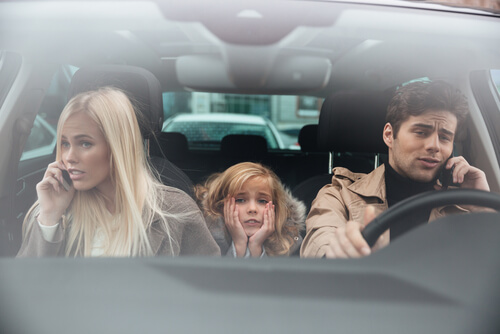
Knowing the dangers of bad driving habits can make you a more responsible motorist, so next time you turn that ignition, or press the start button, remember these driving safety tips and put them into practice. There are a number of other mistakes bad drivers make, and they can soon become bad driving habits. Some might even damage your car…
You May be Damaging Your Car Without Even Knowing it
Most American drivers would like to think of ourselves as, if not experts, then at least safety conscious drivers. But even with the conscious and deliberate choice of trying to be a better driver, we can still mess up pretty bad, lucky for us autonomous cars are only about 10 or 20 years away – read our post, Artificial Intelligence and Driving – the Fears and the Future to get some insight in Deep Learning and AI cars.
As mentioned, there are bad driving habits that are harmful for your body and for other road users, and then there are the habits that we are more than likely not even aware of. What bad driving habits do you have that may be covertly damaging your car?
Avoid Damage to Your Car
You might not even know you’re doing these 10 things that could damage your precious vehicle. Feel free to tick the boxes of the ones you are guilty of:
- Late braking – Sudden braking is often required during emergency stops but if you are consistently hard on your brakes, they will not last very long, and these fast accelerating, fast braking driving practices, use gallons more fuel, meaning forking out more dollars. The world is a better place if you drive cautiously and anticipate the road ahead. It’s a great way to avoid one of the worst bad driving habits.
- Do you ride the clutch? It’s not a good idea to ride the clutch, especially since it’s a ‘wear and tear’ item, which is not covered by a warranty. When a driver fails to release their foot from the pedal after changing gear, or when trying to start the car on a hill, they are typically practicing poor clutch control, and this leads to excessive wear, resulting in a shorter clutch plate life. Make sure your foot is off the clutch pedal – using the foot rest if available. Another good practice is to leave the car in neutral, with the handbrake on, when pulling away on an incline or hill.
- Starting your car when the engine is cold – Some say short trips are bad for your car since the oil doesn’t warm up enough, but in reality, every vehicle starts cold, so the key is not to rev the engine until it is warm. Oil has the chance to warm and circulate throughout the engine, preventing any potential damage or wear and tear.
Stay Focused on Good Driving Habits
- Disregard warning lights at your own peril – This is not a case where ‘this little light of mine should shine’. Modern dashboards have more lights than a New York skyline, and most require immediate attention. Driving while oblivious to your controls is one of the worst driving habits. Know what the warning lights on your dashboard mean and familiarize yourself with the most serious ones so you know what to do when you see them.
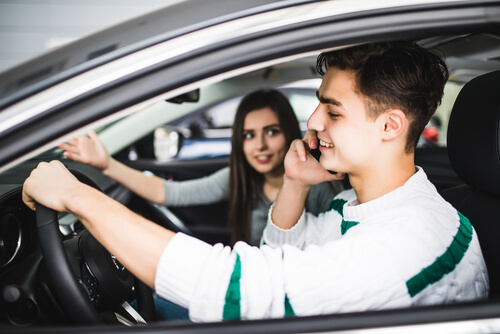
You should stop and seek assistance from a reputable local garage if the following warnings appear on your dashboard:
- Engine and ECU
- Brake system
- Faulty power steering
- Airbag
- Oil pressure
- The cooling system
[ALSO READ: What is an AWD car?]
- Speed bumps and potholes – Potholes are responsible for about a third of all vehicle damage, so it is best to avoid them. Wheels can buckle, tires can become lumpy, alloy wheels can crack, and tracking and wheel balancing can be upset. In the same way, driving over a speed bump without reducing your speed can damage the front and rear of your vehicle, the underside, and potentially the exhaust system.
Overloading and Reverse
- Shift from drive to reverse before your vehicle comes to a complete stop – Shifting from drive to reverse in a car that has an automatic transmission is not a good idea. Automatic transmissions shift gears, the brakes stop the car. The same can basically be said of a manual transmission when a driver crunches gears. Gearboxes and transmission systems are expensive and labor intensive to repair, so it is always best to stop before shifting.
- Vehicle overload – Today’s cars can take some weight, but there are most definitely limits before it leads to depreciation. Usually, your owner’s manual indicates what your car’s maximum load weight is, which can be used to estimate how much luggage you should pack – a concept that is often tested when moving house or going on an extended vacation. Weight increases the amount of strain placed on brakes, suspension, and the drivetrain – something to remember when you leave your full set clubs, or those boxes of documents in your trunk, it will also add to you refuel cost and your efforts to reduce that darn carbon footprint, will be in vain.
Watch Your Speed
- Accelerating harder while in high gear – Although modern cars have fancy lights that tell you when to shift gear, I would advise that you keep your eye on that tachometer. Accelerating too much while in the wrong gear, whether high or low, adds excessive strain on the engine. Allow the revs to rise before changing gears, this is especially important when carrying heavy loads or climbing hills.
- Hands off the gearstick – You might have been told by your driving instructor to always drive with both hands on the wheel, but unfortunately some bad habits tend to accumulate over time. Do you rest your hand on the gearstick when you drive? Did you know that this can cause transmission problems? A gearstick is connected to a selector fork that makes contact with a rotating collar for a few seconds and if your hand is placed on the gearstick, it can cause pressure on the selector fork, leading to premature wear.
Braking Bad Driving Habits
- Applying constant pressure on your brakes – This is a bad driving habit that will wear your brake pads and discs out faster and you will need to replace discs and pads more frequently, increasing your driving expenses. It is best to engage a low gear, brake lightly, and then release the pedal so that the brakes can cool. Repeat this process until you are at the foot of the hill.
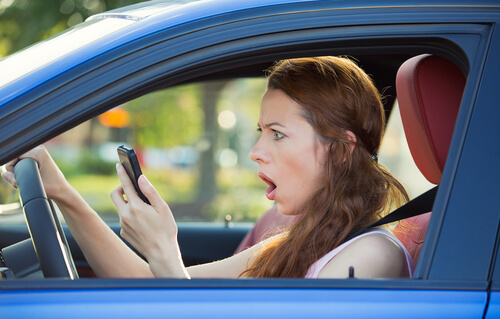
How to Avoid Bad Driving Habits – Ship it!
Ed Sheeran sings that his bad habits lead to late nights, but when it comes to bad driving habits, they can lead to much worse things – like accidents and even personal injury, or worse. The easiest way to avoid all these disastrous sounding occurrences, would obviously be easily avoided if you just didn’t have to drive, especially for long distances.
Learn how to avoid a tire blow-out
Want to save money on gas? Of course! Learn good driving habits to help your car’s fuel efficiency.
Car Shipping is Best
This is where your friendly neighborhood car transporter comes to the rescue. Nationwide Auto Transportation specializes in vehicle shipment to anywhere in the USA and in fact, we strive to exceed our clients’ expectations every time. Providing exceptional customer service is at the heart of everything we do. In addition to shipping automobiles, motorcycles and boats from A to B throughout the nation, we can also assist with international shipping.
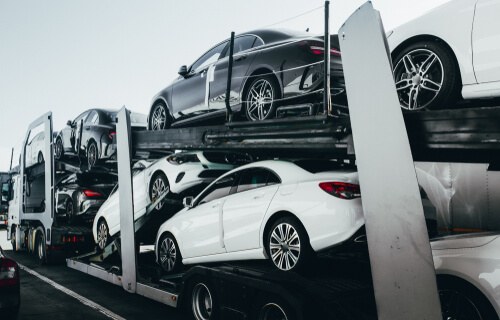
Nationwide Auto Transport is registered with the Federal Motor Carrier Safety Association, and our licensed, insured, and bonded carrier network provides door-to-door open and enclosed vehicle transport services.
Request a quote and schedule your pick-up today. You just need to give us your vehicle’s basic information, as well as its location, destination, and preferred transportation method and we’ll provide you with the best vehicle transport price possible. That way, you don’t need to worry about your bad driving habits, or falling victim to someone else’s.


